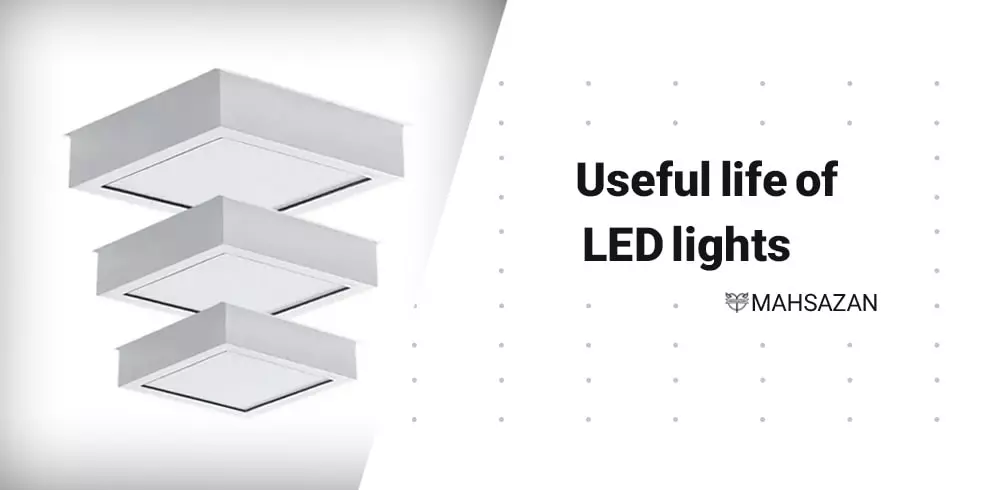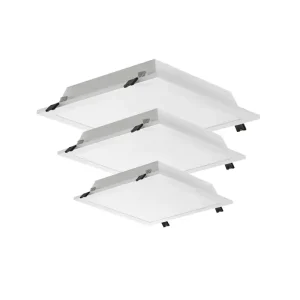Today, LED (Light Emitting Diode) lights have become one of the most popular and widely used options for lighting. These bulbs have gained attention not only for their low energy consumption and high-quality illumination but also for their long lifespan, which is another reason for choosing this modern technology. In this article, we will explore the lifespan of LED lights and the factors that influence it. Additionally, we will discuss strategies to extend the lifespan of these bulbs.
LED lights have replaced many traditional lighting options, such as halogen and fluorescent bulbs, in recent years. Due to their features, including lower energy consumption, longer lifespan, and the ability to produce uniform light, they have become an ideal choice for homes, commercial spaces, and offices. While many users focus on light quality and energy savings, one of the key factors contributing to the success and popularity of these lights is the lifespan of LED lights.
The Useful Life of LED Lights
The useful life of LED lights refers to the amount of time these lights can provide light at a satisfactory quality. This metric is typically expressed as the Lumen Maintenance Factor (LLMF). For example, “L70/50000” means that after 50,000 hours of use, the LED light will still maintain 70% of its initial brightness. This feature gives LED lights a significant advantage over regular lights like fluorescent or incandescent bulbs, which do not maintain such stability.
In other words, based on industry standards, the useful life of LED lights generally ranges from 30,000 to 100,000 hours. This can be equivalent to about 10 to 20 years of daily use, with 5 to 8 hours of operation per day. In other words, LED lights can last approximately 2 to 4 times longer than regular bulbs. This long lifespan and performance stability make LED lights an attractive option for various applications, as they reduce replacement and maintenance costs and are far more energy-efficient compared to other types of lights.
- Mirel built-in panel
Factors Affecting the Lifespan of LED Lights
As mentioned earlier, LED lights have a specific lifespan, but several factors influence their longevity, which must be considered to ensure optimal performance:
- Build Quality
The quality of materials and the construction of LED lights play a significant role in extending their lifespan. Reputable brands typically use high-quality materials in the production of these bulbs, resulting in better performance and a longer lifespan. - Temperature Control
It is crucial to note that LED lights are sensitive to heat, and excessive heat can reduce their lifespan. Therefore, the use of heat sinks and cooling systems in the design of LED lights is essential. When the internal temperature of the bulb rises, it wears out faster, and its brightness gradually decreases. - Power Supply Quality
Unstable voltage and power fluctuations can significantly impact the lifespan of LED lights. Connecting lights to unstable power sources can damage the internal components of the bulb and reduce its lifespan. - Installation Environment
Environmental conditions also greatly affect the lifespan of LED lights and are considered one of the most important reasons for quality degradation. High humidity, extremely low or high temperatures, and environmental pollution can impact the performance and longevity of the bulbs. Therefore, installing lights in suitable locations is of particular importance. The IP (Ingress Protection) rating of LED lights should be chosen according to the installation environment.
MahSazan Company, through its various lighting projects, has successfully earned the satisfaction of its clients across different industries. Some of our prominent clients include large industrial and commercial organizations that, by utilizing our high-quality products, have been able to optimally and attractively illuminate their work and living environments. The successful projects of MahSazan Company stand as a testament to our commitment and expertise in providing modern and efficient lighting solutions for the diverse needs of our clients. MahSazan Company Projects.
How to Extend the Lifespan of LED Lights?
To optimize the use of LED lights and extend their lifespan, it is essential to follow these tips:
- Choose High-Quality Products
The first step in extending the lifespan of LED lights is undoubtedly selecting bulbs that suit your environmental needs. For each specific space, choose lights with appropriate specifications in terms of light intensity, color temperature, and energy consumption. This means selecting a bulb with features such as light intensity (how much light it produces), color temperature (the color of the light, such as white or yellow), and energy consumption (how much energy it uses) that match the requirements of your chosen space. This proper selection ensures the lights perform optimally and have a longer lifespan. - Install in Suitable Environments
LED lights should be installed in dry environments with moderate temperatures. Installing bulbs in places exposed to direct sunlight or excessive humidity can reduce their lifespan. - Use Sensors and Timers
To reduce energy consumption and extend the lifespan of LED lights, you can use motion sensors and timers. These devices automatically turn the lights on or off, preventing them from being on for extended periods. - Temperature Control and Proper Ventilation
Temperature is a significant factor affecting the lifespan of LED lights. Ensure that lights are installed in well-ventilated areas away from heat sources such as heaters and stoves to increase their longevity. - Use Voltage Protection Equipment
To prevent voltage fluctuations and damage to the bulbs, using surge protectors and voltage regulators is recommended. These devices help stabilize voltage and protect the internal circuitry of the bulbs.
Comparison of the Lifespan of LED Lights with Other Lighting Options
Compared to other light sources, LED lights perform significantly better:
- Incandescent Bulbs: Their lifespan is approximately 1,000 hours.
- Fluorescent Bulbs: These bulbs have an average lifespan of 10,000 hours.
- LED Lights: With a lifespan of 50,000 to 100,000 hours, they have a significant advantage over other light sources.
Advantages of LED Lights with a Long Lifespan
LED lights with a long lifespan offer clear benefits that make them an ideal choice for lighting:
- Reduced Maintenance Costs: Due to the long lifespan of these lights, the need for frequent replacements is minimized.
- High Energy Savings: The energy efficiency of LED lights is between 80 to 90 percent, significantly reducing electricity costs.
- Environmentally Friendly: LED lights are free of mercury and, due to their lower energy consumption, have a positive impact on reducing environmental effects.
- High-Quality Lighting: These lights provide uniform, flicker-free light, which is more comfortable for the eyes.
Choosing the Right LED Panel
When selecting LED panels, special attention should be paid to several factors to ensure optimal performance and long lifespan:
- Light Intensity (Lumens): Depending on the needs of the environment, you should select a panel that provides the appropriate light intensity. For larger or commercial spaces, panels with higher light intensity are necessary, while for smaller or residential spaces, softer light panels are sufficient.
- Color Temperature (Kelvin): LED panels are produced in various color temperatures, which depend on the type of space and your usage. For work or study areas, panels with a cool white color temperature (4000-6000 Kelvin) are typically recommended, while for living rooms or relaxation spaces, panels with warmer color temperatures (2700-3000 Kelvin) are more suitable.
- Energy Efficiency: LED panels consume less energy compared to traditional light sources while producing more brightness.
- Waterproof and Resistant to Environmental Conditions: If you need LED panels for outdoor spaces or humid environments, you should use panels with an appropriate protection rating (IP), such as IP65 or higher, to ensure they are resistant to moisture and dust.
- Build Quality: High-quality LED panels typically have a longer lifespan and are more resistant to issues like excessive heat and voltage fluctuations. Choosing panels from reputable brands with warranties can help ensure better quality and durability. By considering these factors, you can select the right LED panels for your space and enjoy their long-lasting and efficient performance.
By following these tips, you can choose the right LED panels for your environment and benefit from their long lifespan and optimal performance.
Conclusion
LED lights, with their unique features, have become an ideal choice for modern lighting. The lifespan of LED lights can reach up to 100,000 hours, depending on their build quality, usage, and environmental conditions. Simple practices such as proper installation, the use of sensors, and voltage protection can help extend the longevity of these lights.
Given the numerous benefits of LED lights, choosing them as a lighting source not only benefits the environment but also leads to energy savings and reduced maintenance costs. For purchasing high-quality and suitable LED lights, you can consult reputable stores and industry experts to make the best choice for your needs.
Due to their long lifespan, high energy efficiency, and lower maintenance costs, LED lights are among the best choices for lighting homes, workplaces, and public spaces. By following the tips and strategies provided in this article, you can make the most of these lights and enjoy sustainable, high-quality lighting.




